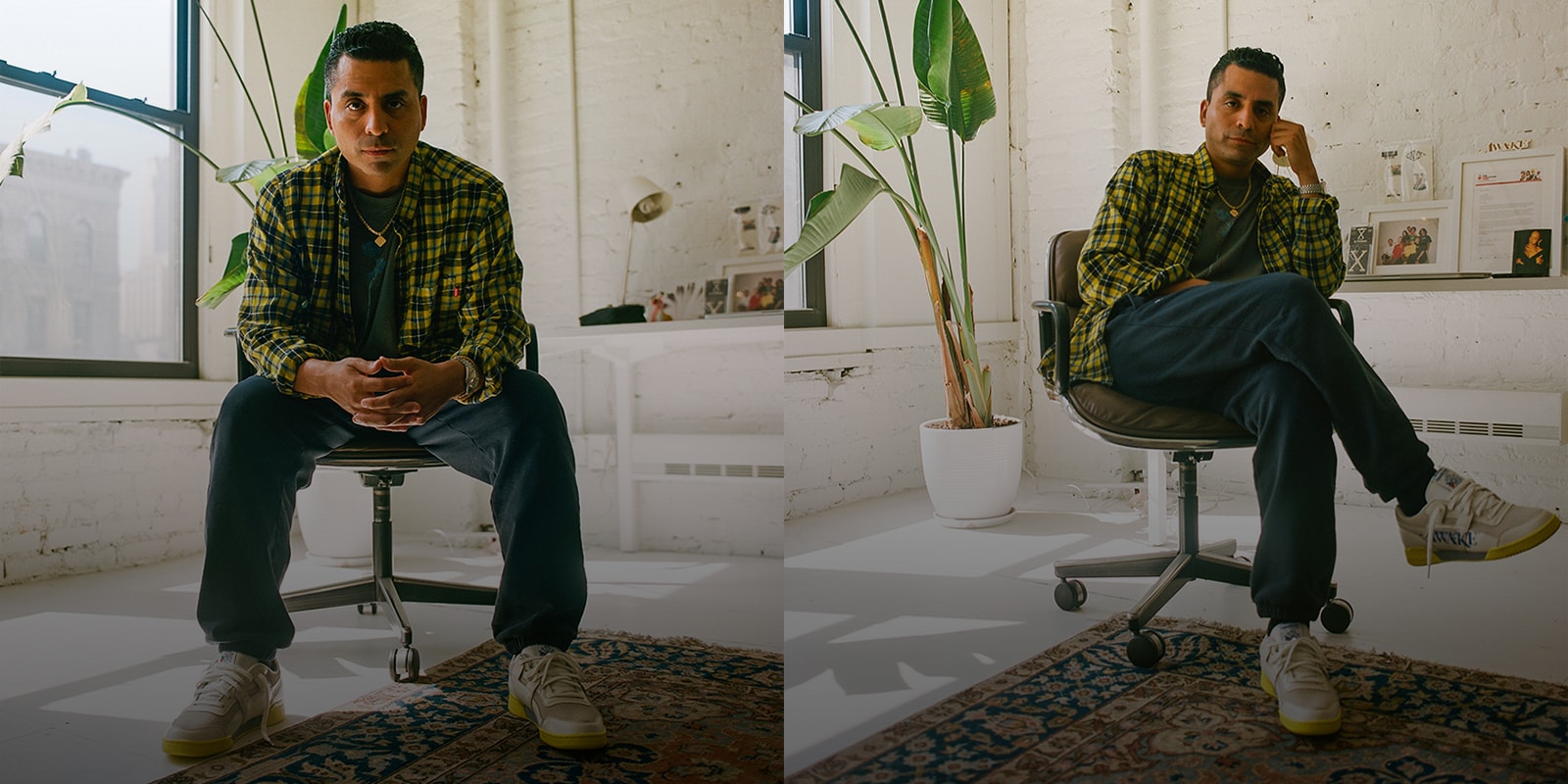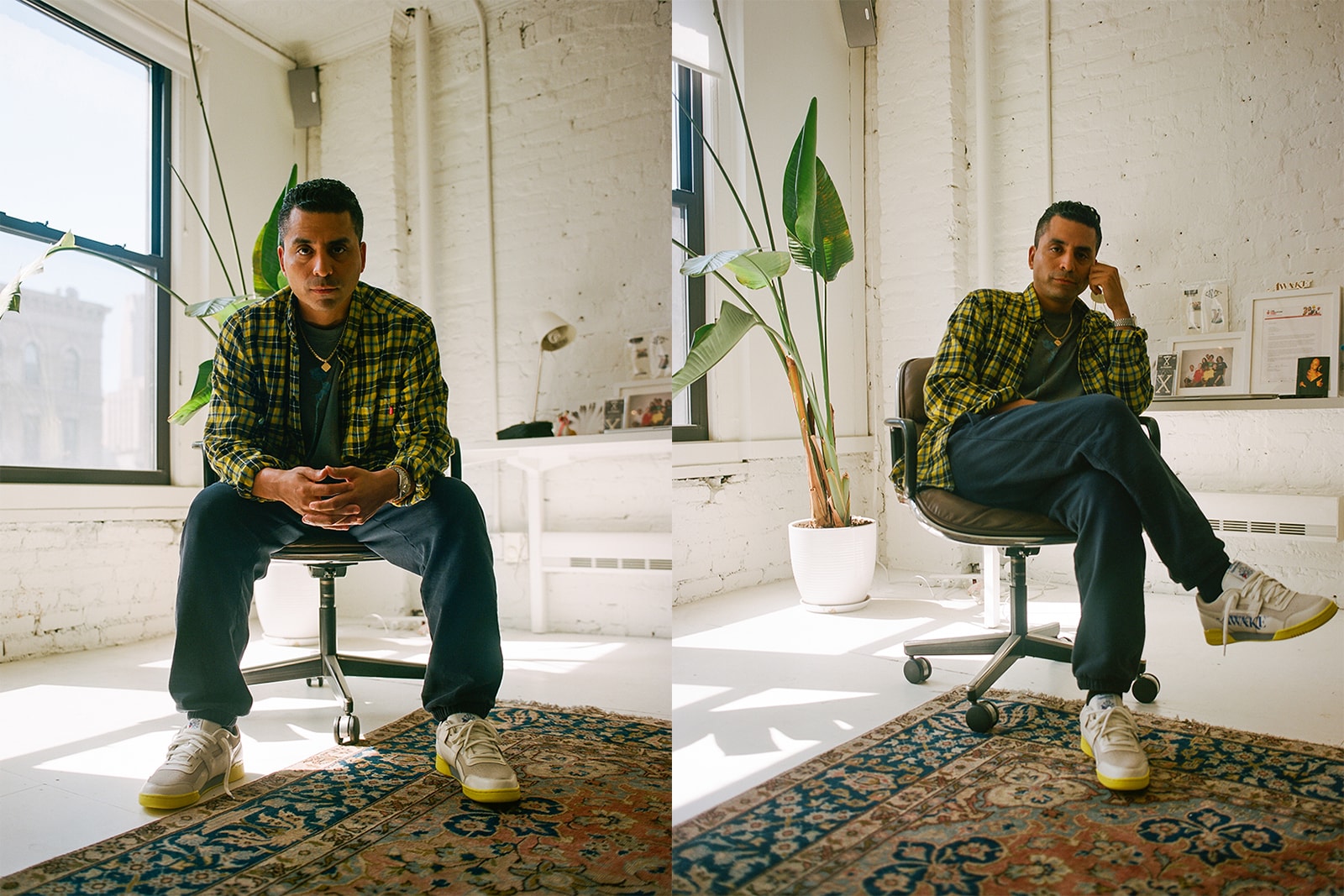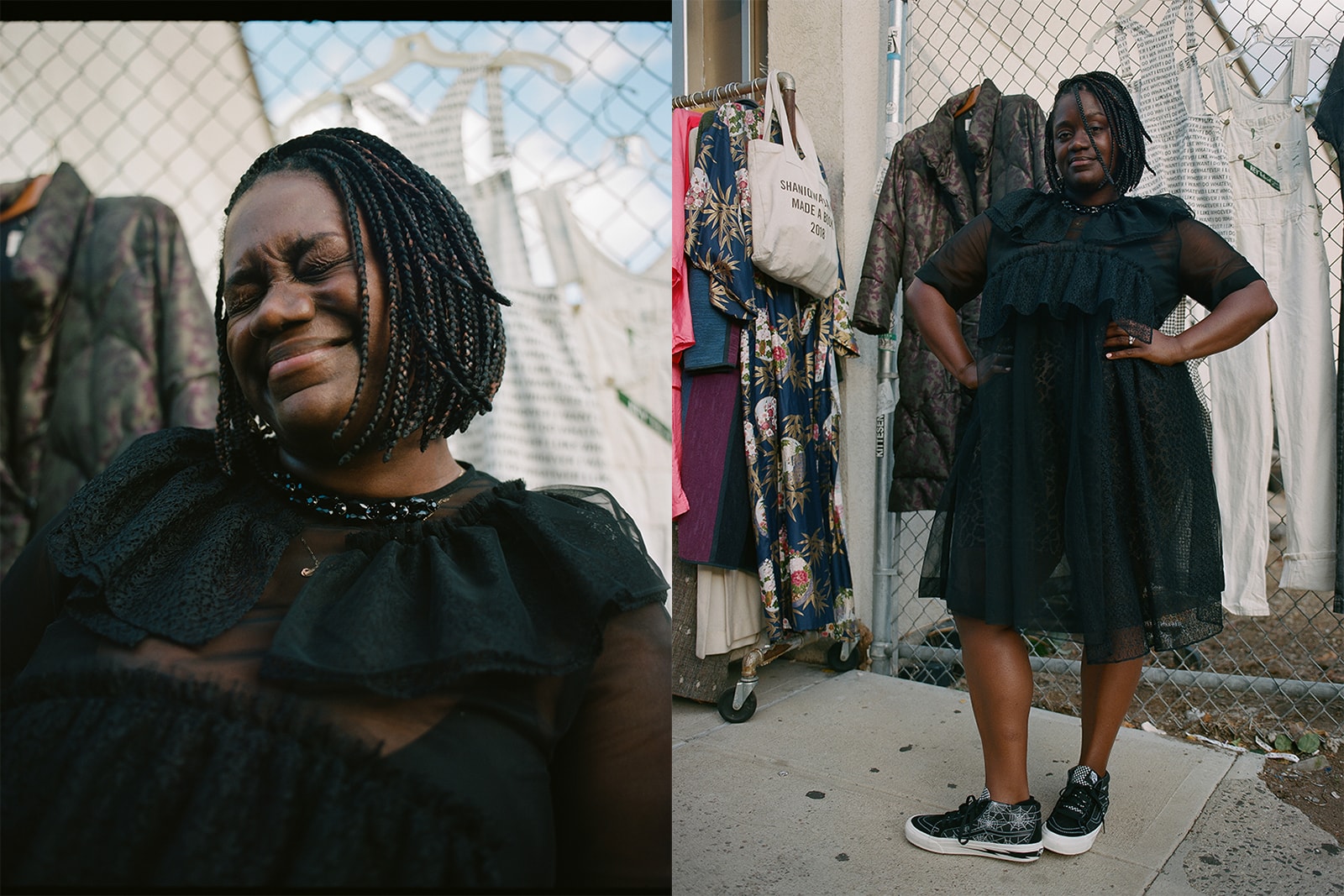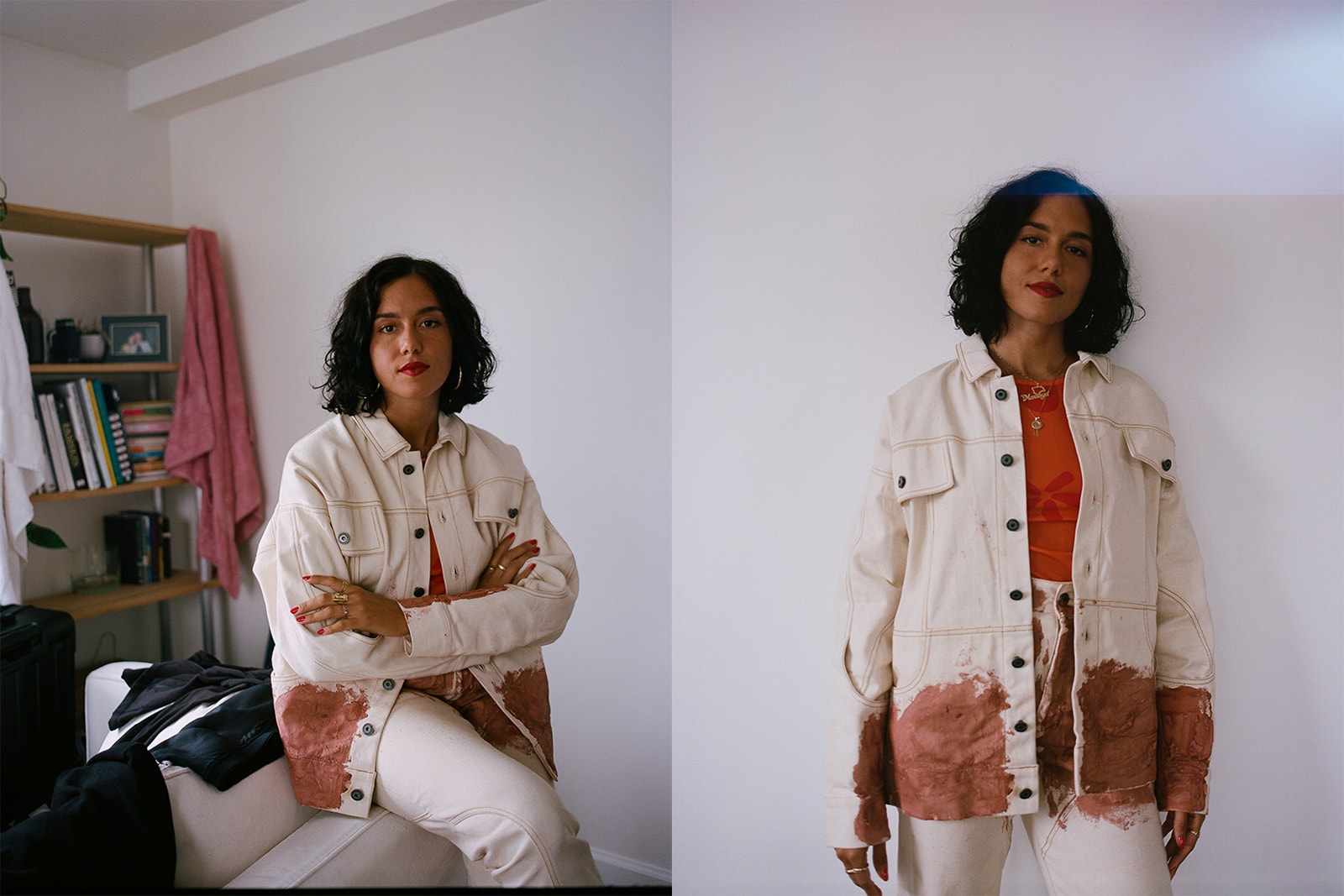

The thriving cultural and arts communities of New York remain a hotbed for creative collaboration. For Queens native Angelo Baque, much of this is relayed into the New York melting pot that he himself has developed. From his lengthy stint as brand director at Supreme—which saw him nurturing the brand into a global fashion phenomenon—to his current creative endeavors with Awake NY, his Baque Creative studio and Social Studies endeavor, Baque’s narrative is as much an ode to his individualistic passions as it is to the creative community to which he belongs.
Baque recently sat down with four of his co-conspirators to ask them what this coming together of community entails for their practice. From Ghetto Gastro co-founder Jon Gray to renowned artists and social activists June Canedo and Shaniqwa Jarvis, to DSMNY Vice President James Gilchrist, the ideas of diversity, community, the creation of value, and mandating a basis for future generations of creatives are starkly highlighted.
James Gilchrist (Dover Street Market New York)
So was there a specific designer who, the minute you saw their clothes, you were like, “Fuck, I need to know how this is done”?
I think Comme was really the first one. I remember saving to buy my first shirt. I had no money, so it was a big deal. I think it was £400 or something, which was a lot of money. I remember saving up and like, Well, I’ll just not eat for a week and I’ll have this amazing shirt.
So, at what point did you start working for Comme?
I went to college with this legendary retailer in Glasgow who had a famous shop there called the Warehouse. This guy was writing Paul Smith’s first order in 1970, and he had Walter Van Beirendonck, John Galliano, the Antwerp Six and Comme… But he decided in the late ʼ90s to close the store and get a master’s in fashion. On the first day of class, they asked us to go around the room and tell each other what designers we liked. He and I both said Comme. We were best mates after that.
“Comme was kind of always there. I remember saving to buy my first shirt. I had no money, so it was a big deal. I remember saving up and like, Well, I’ll just not eat for a week and I’ll have this amazing shirt.”
One of the parts of the course was to go to Paris Men’s Fashion Week. He took me to the Comme des Garçons show and introduced me to Adrian and Rei on that trip. I also met Paul Smith. It was insane. I used a lot of the connections that I got on that trip in Paris to do my thesis project. So, Comme des Garçons contributed to my thesis, Raf Simons contributed to my thesis… It was pretty cool how I managed to get the connections going, even from just one trip to Paris.
Almost every kid that comes to intern for me, their favorite spot to hang out is at Dover Street, New York. I want to know, are you conscious of that?
In my day to day, I guess I’m not so conscious about it. What I am very conscious is building the community around the store, and all of the stores. I think in the New York stores, the community’s very varied. It’s super cool. I hope we keep it, I really do.
Shaniqwa Jarvis (Photographer)
A lot of people don’t know the story of how you got from point A to point Z. I’ve known you for over 20 years now, I’ve seen your struggle, not only as a creative, not solely as an African American woman, but through it all. Can you tell a little bit of your story?
When I was interning for Paper Magazine in the late ʼ90s, the editors-in-chief sent me out on multiple photo shoots, and I was like, “I think I want to be a photographer. What do I do? What do you guys think?” They were like, “Oh, you should go take a class.” I always looked back on that time and wondered: if I was a white dude, would they’ve been like, “Oh, here, go follow this person and shoot this thing.” You know?
Every time I look back on my journey, I feel that was always going to be a part of it—having to do one extra step more than other people who don’t look like me. Then I finally came into a space where I was like, “You know what? I can’t sit around trying to impress people who aren’t even checking for me. I have to just do me.” That really changed what my work looked like, how I felt, what I would work on.
Originally, HYPEBEAST wanted to do a feature on me, but I said, “No, I’d rather have conversations with the people that have helped shape my post-Supreme career.” And you’re a big part of that. You came on board to be my creative partner when Nike first commissioned my agency, Baque Creative, to come up with the programming for the Virgil 10. A lot of people don’t know that.
I don’t think even Virgil knows that.
“Build your family, build your creative family, build your financial family, build all the families you need to be there for you. Don’t just link with someone because you think that they will look good next to you.”
Why is it do you feel that we are able to bring out the best in one another when we work together? At the core of it, maybe the theme is our community.
Our relationship started because you hit me up about wanting to go to art school, we talked about being artists. Our conversations haven’t changed that much from that first one. We’re both very honest with one another, and we also are super competitive. Those things really help bring out the best work in both of us.
What words of advice do you have for this next generation of young creatives?
The most important thing is to know yourself. Once you know yourself, then you will only attract other humans who also know themselves, or will need to lean on you to help them know themselves. Build your family, build your creative family, build your financial family, build all the families you need to be there for you. Don’t just link with someone because you think that they will look good next to you. Link with someone because you like the way they think, you like spiritually how they move. Be prepared to work all the fucking time. And with that, love what you do and the people you do it with. That’s all I got.
Jon Gray (Ghetto Gastro)
A lot of your work has been centered around de-villainizing the stigma that the Bronx has. Can you tell us a little bit about your upbringing there and the impact that it’s had in your life?
Well, I’m going to just say something. I’m not really trying to de-villainize it because that would be me centering whiteness and white supremacy . It’s really about just celebrating the culture and the people, the creatives that exist in the town.
I’m not someone that’s super knowledgeable on all the TED talks, but I can easily say that you’re the first person to go up there with a du-rag and a tracksuit on and really lay it down. Can you walk me through the thought process of making that TED talk and the significance it had to you?
Well that was super intentional because I realize these rooms are probably majority white or super intellectual.
“It’s like how Nipsey said that the highest act of God is inspiring others, right?”
I wanted to really celebrate that someone like me could be on that stage and throw the du-rag on, let the chain hang over the track suit, rock the Jays. I could have went up there with some black Rick Owens and been like Steve Jobs on the stage. For me, the visual is very important for generations younger than us. Like yeah, you could do these things, you could face ten years to life in jail and you could do a TED talk.
What legacy do you hope to leave in the world, and what do you hope to be your lasting impact with Ghetto Gastro?
I’d love for Ghetto Gastro to become like the Bauhaus school of architecture, where it’s a reframing and a reprogramming of thought. Hopefully, arming people with the tools to just think outside the box and maybe create something that represents where they’re from and gives them a sense of hope and joy and also a revenue source to put food on the table.
It’s like how Nipsey said that the highest act of God is inspiring others, right? So I just want to really inspire and encourage as many people as possible to reject and unlearn some of the things we’ve been taught. And then once you deconstruct and unlearn those things, the sky’s the limit.June Canedo (Chroma)
Can you tell us what Chroma is about and what Chroma’s purpose is?Chroma is a creative studio that centers the work and perspectives of women of color. We curate events, we conceptualize ideas, we bring communities together and act as a middle person between brands or institutions, and our community.
Recently, we collaborated on the “Protect People Not Borders” tee, where the objective was to bring awareness to what’s currently happening at the border. Can you explain the driving force behind this?
I think one of the positive aspects of working in the fashion industry is that it’s one of the most accessible ways to communicate a message. I have always been a believer in utilizing the tools in front of you to get a message across. It was us thinking about ways in which we could uplift the work of people who are already working at the border.
“One of the positive aspects of working in the fashion industry is that it’s one of the most accessible ways to communicate a message. You know, clothing and fashion channels have the power of pop culture.”
I personally have a direct relationship to what’s happening at the US-Mexico border, which is what made the execution of this initiative personal. Those were our friends that showed up to wear the tee shirts and post about it. The two organizations that we selected for this project were organizations that were really vetted and suggested to us by people in our community. The whole process was really intentional, and that’s what we need more of.
Something I am really proud of is each step of the process was very collaborative. There was a lot of love that went into that project. Streetwear collabs aren’t that deep today. It’s kind of like, “Oh, you’re cool. I’m cool. Let’s just do this.”
Oh, that’s so interesting. I didn’t know that.
It’s very transactional, is what I’m trying to say. It ain’t that deep in this industry. But the project that we did, there was a lot of depth to it, and that’s why it was well received. That was huge.
THIS STORY WAS ORIGINALLY PUBLISHED IN HYPEBEAST MAGAZINE ISSUE 27: THE KINSHIP ISSUE AS “IN GOOD COMPANY”. FIND OUT MORE HERE.




